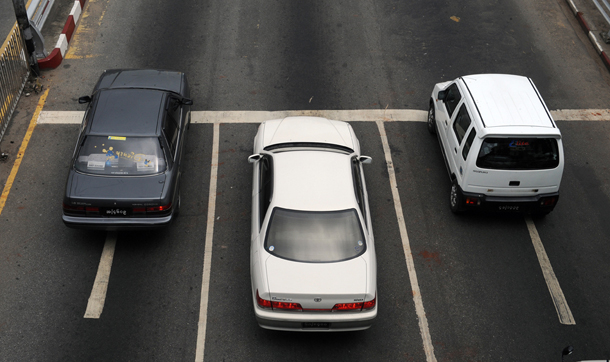RANGOON — The Burmese government has altered the country’s car import policy, one of a number of recent developments to see the foreign exchange rate climb to an eight-year high against the greenback.
The new policy, set to come into effect on Jan. 1, stipulates that the only type of automobiles manufactured between 2006 and 2013 allowed for import are private passenger vehicles. Buses, trucks and other vehicles must be manufactured between 2014 and 2016 to qualify for import permission. Separate import permits have been created for the two categories, with importers required to pay taxes based on the vehicle’s list value.
Local sellers have until Dec. 24 to import automobiles under the current policy.
The ban on imports of older models of buses and trucks will raise business costs at a time when Burma is laboring under a structural trade deficit, which has helped weaken the value of the local currency by over 30 percent against the US dollar since November 2014.
Since the policy was announced on Dec. 15, the official exchange rate set by the Central Bank of Myanmar has climbed to 1,307 kyats per dollar, while black market traders are offering prices of around 1,315 kyats. The rate is the highest since the aftermath of the 2007 Saffron Revolution, when the black market was offering around 1,400 kyats on the dollar.
“There’s been an increase in demand for the dollar recently because the old car import policy is set to expire very soon,” said Soe Tun, chairman of the Myanmar Automobile Dealers Association. “But I think the value of the kyat will increase again once we’ve passed this month’s deadline.”
A number of other factors are also depressing the value of the kyat. The World Bank forecast a slump in Burma’s economic growth in October, following the wet season’s nationwide flooding disaster and lower than expected foreign investment pledges.
The US Federal Reserve’s decision to raise interest rates for the first time since 2006 also suggests the American economy is continuing its slow recovery from the depths of the global economic crisis at the end of last decade, and has helped the US dollar continue to perform strongly against other currencies.
Maung Aung, senior economist at the Ministry of Commerce, said that the next government faced a number of challenges in attempting to reverse the kyat’s slide.
“Our export values are going down, especially for natural gas, jade, and gems,” he said. “We also need to stabilize everything, economically and politically.”
Yet Myo Thet, vice president of the Union of Myanmar Federation of Chambers of Commerce and Industry (UMFCCI), is optimistic that this stability can be achieved under the incoming government.
“We need an inflow of dollars from abroad. Investors have a ‘wait and see’ attitude during this politically uncertain period in time, which is why large quantities of investments have yet to come into Burma. I think that dollar prices will stabilize more quickly once the new government is sworn in,” he said.
“The new government needs to adopt effective economic policies. It’s also important that it adopts clear policies, because if the policies are good, the economy will be good, too,” he added.

















